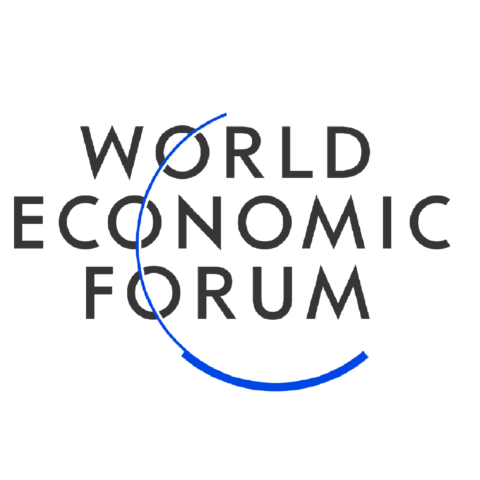- Demand for meat and protein set to double by 2050 with 9 billion people and a growing middle class
- Widespread provision of safe, affordable and sustainable protein is critical to human nutrition and economic development
- New white paper Meat: The Future outlines what is needed to propel a sustainable and nutritious food revolution to meet tomorrow’s demand; Forum to host a dialogue in 2018
- The 48th World Economic Forum Annual Meeting is taking place on 23-26 January in Davos-Klosters, Switzerland, under the theme Creating a Shared Future in a Fractured World
For more information, www.weforum.org
Davos, Switzerland, 25 January 2018 – A new initiative has been launched at the World Economic Forum Annual Meeting 2018. Meat: The Future aims to shape the agenda for global meat and protein production to ensure a range of universally accessible, safe, affordable and sustainable meat and protein options to meet tomorrow’s demand.

The future of meat was on the menu at the Annual Meeting as leaders from the food and agricultural industry, government, civil society, and meat and food technology companies recognized the triple pressures of rising middle-class demand, health issues linked to both under- and over-consumption of meat and protein around the world, and environmental sustainability, which requires changes to the global system of meat and protein production.
The provision of safe, sustainable and affordable protein is critical to human nutrition. For many people, animal products are the most desirable way to access nutrient-rich and tasty protein. Meat – in particular, red meat – is currently the core of protein delivery, packing much more of a protein, micronutrient and amino acid punch per kilo than plants. In many parts of the world it carries a cultural significance and it can also be a sign of affluence – a critical driver of demand as the global middle class grows to 3 billion people by 2030.
Consumption of meat and protein, however, is unevenly distributed. Globally, 815 million people are malnourished and lack basic proteins, while people in higher-incomes countries consume, on average, 200-250 grammes of meat per person per day, 10 times that of lower-consuming populations and well above World Health Organization guidelines for safe adult consumption.
In 2017, the world was projected to produce a record 263 million tonnes of beef, pork and chicken meat – this is expected to double by 2050. In its current state, global livestock produces about 15% of all greenhouse gas emissions, while meat production consumes a significant amount of water and is a major driver of deforestation and habitat loss – responsible for up to 75% of all forest clearing in the Amazon. Livestock production in wealthier countries also uses a lot of grain – in 2016, 30% of all grain produced was used for animal feed, according to the Food and Agriculture Organization of the United Nations.
Discussions in a special session at the Annual Meeting, Tasting the Future of Food, on Tuesday 23 January, recognized that current approaches to meat and protein production will be inadequate to meet tomorrow’s protein demands. Participants also addressed issues of access, affordability, sustainability and affordability. A new white paper presented for the dialogue, Meat: The Future, outlines potential levers to propel the change required.
Innovations in meat and protein delivery, driven by the Fourth Industrial Revolution, are enabling one set of solutions – laboratory-grown meat, plant-based protein alternatives and ultra-precision farming. Advanced production and feed systems and a change in consumer behaviour must also play a role. Government policy and international cooperation will also be critical – in both the developed and developing markets – to push public-private cooperation on building a portfolio of protein solutions to meet tomorrow’s demands in line with the Sustainable Development Goals.
Tom Hayes, President and Chief Executive Officer of Tyson Foods, said: “We can all agree that there are tremendous challenges in front of us and we all want to produce a better future. When it comes to the future of protein, taste, value, access, sustainability and nutrition all matter – and there’s no one-size-fits-all solution to meeting all of those factors. We must work together to evolve our current meat production, explore alternative proteins and encourage new consumer behaviours, especially on reducing food waste.”
The World Economic Forum will host a dialogue, Meat: the Future, during 2018, which will bring together public and private sectors as well as scientists, civil society leaders, technology innovators and other experts. The talks will help to fast-track new approaches for the future of meat and protein production to deliver safe, affordable and sustainable protein to meet growing consumer demands.
Dominic Waughray, Head of Public-Private Partnership, Member of the Executive Committee at the World Economic Forum, said: “A portfolio of proteins will be needed, but this can only be delivered if the public and private sectors, food and tech experts, health experts, environment experts and consumer representatives can accelerate the delivery of such 21st-century proteins. The World Economic Forum looks forward to engaging stakeholders to bring this critical issue to the forefront of multistakeholder action.”
Ideas and recommendations emerging from the Annual Meeting discussion will be discussed in June 2018 at the World Economic Forum Annual Meeting of the New Champions in Tianjin, China, and in September at the World Economic Forum Sustainable Development Impact Summit alongside the UN General Assembly in New York. A final paper with recommendations will be published after the World Economic Forum Annual Meeting 2019.
